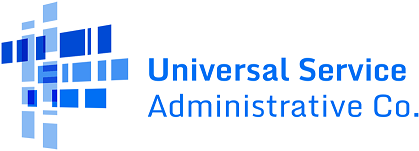Join Lifeline as an ETC
Eligible telecommunications carriers (ETCs, or service providers) can offer a discount to eligible low-income consumers on their mobile or fixed (i.e., landline) voice service or broadband (i.e., internet) service and receive a reimbursement from the federal universal service fund.
To offer Lifeline-supported services, service providers must:
- Create a Compliance Plan (if applicable)
- Become an Eligible Telecommunications Carrier (ETC)
- Obtain a 498 ID
- Obtain a Study Area Code (SAC)
Create a Compliance Plan
Providers Responsible for Compliance Plan
- Service providers who are resellers rather than facilities-based providers and are availing themselves of the blanket facilities-based forbearance granted by the FCC must submit a compliance plan to the FCC. USAC will only issue a Lifeline SAC(s) if the Lifeline compliance plan has been approved by the FCC and is in good standing.
Resources
The Wireline Competition Bureau’s Lifeline Compliance Plan Guidance Public Notice outlines what to include in a compliance plan.
Become an Eligible Telecommunications Carrier (ETC)
To participate in the Lifeline program, service providers must be designated as an eligible telecommunications carrier (ETC) by their respective state regulatory commission or, in some cases, by the FCC. After receiving the designation, ETCs must meet all Lifeline requirements.
Lifeline ETC Designation through States
Where states designate Lifeline ETCs, service providers should contact their respective state commission to initiate the ETC designation process.
Lifeline ETC Designation through the FCC
Where states do not designate Lifeline ETCs, service providers must apply to the FCC for designation. These same rules apply to service providers intending to serve Tribal residents on Tribal lands.
- Tribally owned service providers
If there is ambiguity about whether a state has jurisdiction over a Tribally owned service provider, they may petition the FCC for a determination of jurisdiction. - Other service providers
If a service provider consults with its state utility regulator and determines that the state does not have the authority to designate it as an ETC, it must seek designation through the FCC.
Obtain a 498 ID
A 498 ID (also known as SPIN) is required for all parties that participate in any of the four universal service programs and receive payment directly from USAC. This ID is a unique number assigned to each service provider by USAC and serves as USAC’s tool to ensure that approved support is directed to the correct service provider.
Note: New Lifeline only providers will need a study area code (SAC) from USAC before they can sign up for a 498 ID. Learn more about how to obtain a Study Area Code (SAC).
FCC Form 498
Recipients of universal service support receive disbursements through automatic deposit to the bank account designated on the FCC Form.
The FCC Form 498 collects service provider contact, billing, and collection information.
Register for a 498 ID
Service providers register for a 498 ID by visiting E-File in One Portal, USAC’s single sign-in dashboard for all USAC systems (including Lifeline systems), and selecting “create an account” from the bottom menu. Then they select “Service Provider – 498 ID” and click “Register Your Company.” Once the information has been validated and approved, USAC will issue a 498 ID.
Resources
For more information on how service providers can obtain and manage a 498 ID, refer to the Register for a 498 ID webpage.
Obtain a Study Area Code (SAC)
A Study Area Code (SAC) is a unique number that USAC assigns to eligible telecommunication carriers (ETCs) that identifies that service provider based on its service area. Service providers must have at least one SAC per state in which they operate but can have more than one SAC within a state if they have more than one service area.
Request a SAC
USAC uses the following information to review a request for a Lifeline SAC:
- The ETC’s designation order and supporting documentation necessary to identify the new ETC service area,
- The approved compliance plan (if applicable),
- Terms and conditions of Lifeline program service, including service plans,
- 498 ID and company contact information, and
- Any other supporting documentation that asserts that the provider is approved to participate in the Lifeline program.
For more information about SAC requests, email LifelineProgram@usac.org.
Once you have completed all the requirements and received a SAC, your company’s contact information needs to be reflected on Lifeline’s Companies Near Me tool. This tool enables consumers to search for a list of Lifeline service providers in their area by zip code or city and state. If you need to add or update information on the Companies Near Me tool, email Lifeline Program.
Relinquish an ETC Designation
If a service provider no longer wishes to participate in the Lifeline program, it must relinquish its ETC designation with the designating authority. ETCs must submit their relinquishment order to USAC via email (LifelineProgram@usac.org).
